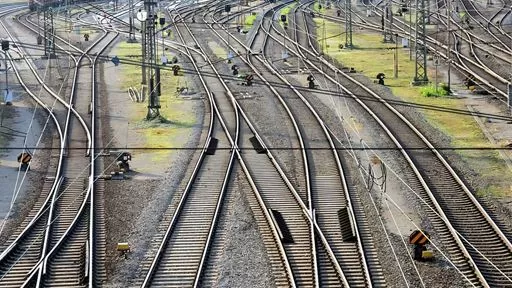Indian Railways, the lifeline of India, is undergoing a remarkable transformation. The world’s fourth-largest railway network, which carries over 23 million passengers every day, is on a journey towards modernization and sustainability. This transformation is being driven by various initiatives taken by the Indian government, including electrification, renewable energy adoption, and the implementation of the Kavach safety system. These initiatives are not only making the Indian Railways more efficient and safe but also contributing towards a greener and cleaner environment.
One of the major initiatives taken by the Indian Railways is the electrification of its network. The aim is to electrify the entire rail network by 2023, which will reduce the dependence on fossil fuels and make the railways more energy-efficient. Currently, only about 45% of the railway network is electrified, and the remaining 55% is still running on diesel. The electrification drive will not only reduce the carbon footprint but also save the railways a significant amount of money spent on fuel. This will ultimately lead to a more sustainable and cost-effective railway system.
In addition to electrification, the Indian Railways is also actively adopting renewable energy sources. The railways have set a target to generate 1000 MW of solar power and 200 MW of wind power by 2021-22. Currently, the railways have installed solar panels on the rooftops of various railway stations, offices, and railway colonies, generating around 100 MW of solar power. This has not only reduced the electricity bills but also reduced the carbon emissions. The use of renewable energy sources is a step towards making the Indian Railways self-sufficient in terms of energy and reducing its carbon footprint.
Another significant initiative taken by the Indian Railways is the implementation of the Kavach safety system. Kavach, which means shield in Hindi, is an advanced train protection and warning system that aims to prevent train accidents. It is a combination of various technologies like automatic train protection, train collision avoidance system, and train tracking system. The system will provide real-time information about the location and speed of trains, ensuring safe and efficient train operations. The Kavach system is being installed on the entire Indian Railways network, and it is expected to be completed by 2022. This will make the Indian Railways one of the safest railway networks in the world.
Apart from these major initiatives, the Indian Railways is also taking several other steps towards modernization and sustainability. The railways have introduced modern and faster trains like the Vande Bharat Express and Tejas Express, which have reduced travel time and improved passenger experience. The railways have also introduced bio-toilets in trains, which has helped in maintaining cleanliness and hygiene on board. The use of technology has also increased, with the introduction of e-ticketing, GPS-based tracking of trains, and the use of artificial intelligence for maintenance and operations.
The transformation of the Indian Railways is not only limited to its operations but also extends to its workforce. The railways have taken various steps to improve the working conditions of its employees, including the introduction of a new uniform, better living quarters, and improved healthcare facilities. The railways have also launched various skill development programs for its employees, ensuring their professional growth and development.
The transformation of the Indian Railways is a result of the government’s vision to make it a world-class railway network. The initiatives taken by the government are not only making the railways more efficient and safe but also contributing towards a greener and cleaner environment. The electrification and adoption of renewable energy sources will reduce the carbon footprint and make the railways more sustainable. The implementation of the Kavach safety system will ensure the safety of passengers and prevent train accidents. The modernization of the railways will improve the passenger experience and make it more competitive with other modes of transportation.
In conclusion, the Indian Railways is undergoing a remarkable transformation, and the credit goes to the various initiatives taken by the government. The railways are not only becoming more efficient and safe but also contributing towards a greener and cleaner environment. The transformation of the Indian Railways is a step towards making it a world-class railway network and a source of pride for the nation. With the continued efforts and support from the government, the Indian Railways is on track to achieve its goal of becoming a modern, sustainable, and safe railway network.



